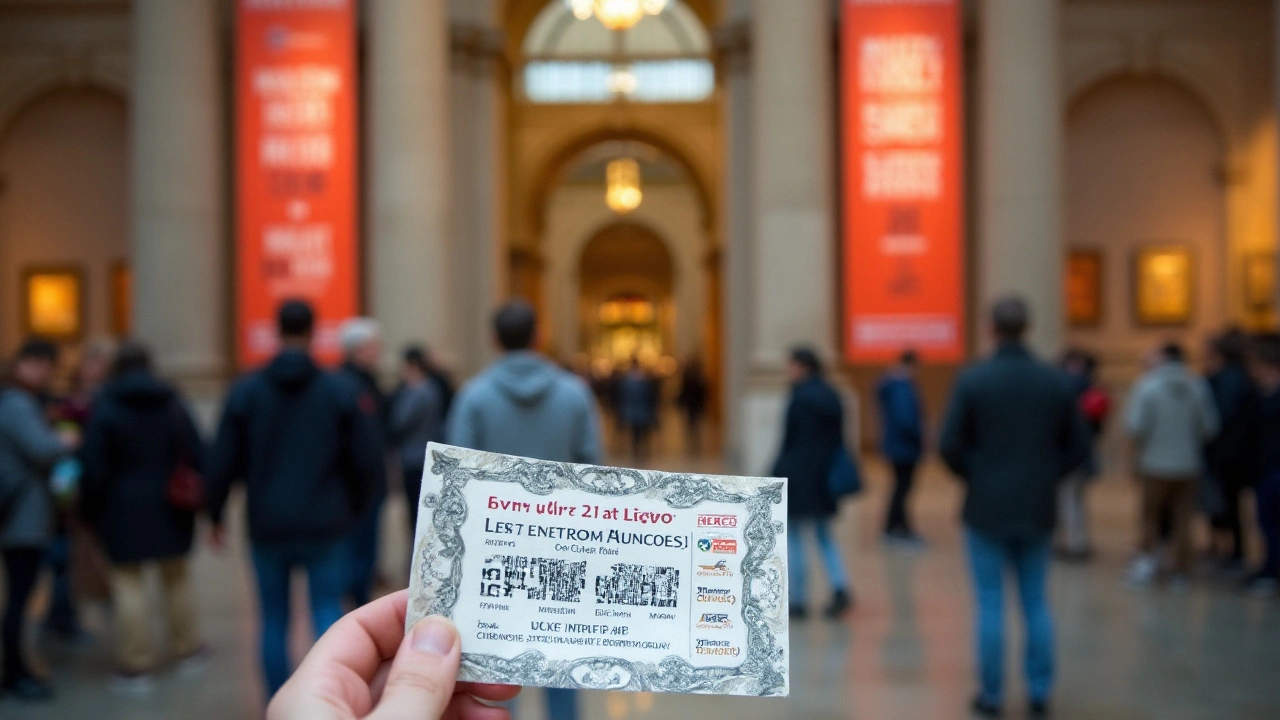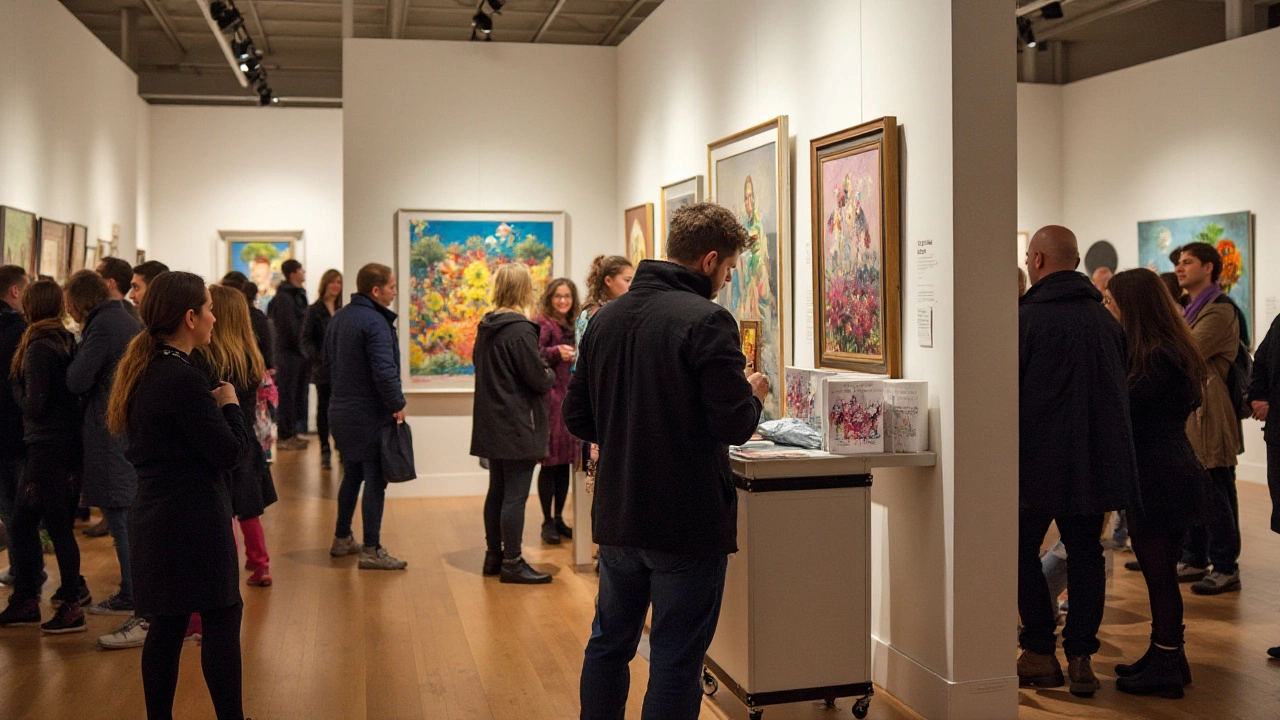Art exhibits often captivate audiences with their ability to bring creativity to life. But beneath the surface of artistic beauty lies a world of revenue possibilities. Do these exhibits really make money? The answer is as nuanced as the art itself. By exploring various income streams, from tickets to sponsorships, art exhibits can indeed turn a profit.
While some exhibitions are crafted solely for the love of art, others leverage high-profile artists and innovative marketing to attract bigger crowds and higher revenue. Understanding the delicate balance between maintaining artistic integrity and achieving financial success is key. Join me as we delve into the fascinating intersection of art and finance, where creativity meets commerce.
- From Art to Income: The Revenue Streams
- The Influence of High-Profile Exhibits
- Balancing Artistic Vision with Financial Goals
- Merchandise and Memorabilia: Beyond Ticket Sales
- Crafting Success Through Innovation and Marketing
From Art to Income: The Revenue Streams
While most people view art exhibits as places to admire creativity and culture, there is an underlying financial structure that sustains these beautiful exhibitions. An art exhibit’s ability to generate revenue is as diverse and captivating as the art itself. The primary revenue stream for art exhibits comes from ticket sales. This is often the first point of contact where art meets commerce. Pricing is a delicate art form here; it should reflect the value of the exhibit while remaining accessible to a range of audiences. Exhibitors often implement dynamic pricing strategies that fluctuate based on demand, peak hours, or special events.
Beyond tickets, merchandise offers another lucrative opportunity for art exhibits to increase their earnings. Visitors are usually eager to purchase memorabilia that reminds them of their unique experience. This can range from prints and posters to bespoke items created by artists. Such items not only offer revenue but also serve as marketing tools that visitors carry out into the world. The breadth and quality of merchandise can significantly impact the exhibit’s financial bottom line.
Sponsorships and partnerships also play a critical role in how art exhibitions make money. Corporations often view art exhibits as a way to associate their brand with culture and creativity. Securing a high-profile sponsor not only provides a financial lifeline but can also lend credibility and draw a larger audience. Exhibitors must skillfully craft proposals that highlight mutual benefits to secure these partnerships. Such relationships can transform the perception of an exhibit from merely an artistic endeavor to a prestigious cultural event.
The ancillary revenue streams of cafés and guided tours also cannot be overlooked. Many successful exhibits include on-site dining options that cater to visitors, prolonging their stay and experience. Guided tours, whether led by knowledgeable staff or offered through interactive apps, create added value for visitors willing to pay for an enriched experience. These elements not only generate additional revenue but also enhance visitor satisfaction by providing a holistic service.
In order to visualize these revenue streams, consider this data representation that reflects typical income distribution:
| Revenue Source | Percentage of Total Revenue |
|---|---|
| Ticket Sales | 50% |
| Merchandise | 20% |
| Sponsorships | 15% |
| Cafés & Tours | 15% |
As the numbers suggest, a diversified approach is key to maximizing the financial potential of art exhibits. This comprehensive revenue strategy showcases how these cultural events can thrive financially while sharing the beauty of art with the world. By understanding and effectively managing these streams, art exhibits can achieve sustainable success that balances both artistic integrity and financial health.
The Influence of High-Profile Exhibits
High-profile art exhibits command attention not only in the art world but also in the larger cultural landscape. When an exhibit features the works of renowned artists, whether contemporary or classic, it tends to attract a more extensive audience. This is partly because such artists come with an established fan base eager to view their art in person and partly due to heightened media coverage, which naturally boosts public interest. A well-publicized exhibit, showcasing iconic pieces, often becomes a social event, drawing in crowds looking to participate in the cultural conversation. Icons like Van Gogh or Warhol, for instance, continue to draw throngs long after their lifetimes, as seen in popular retrospectives worldwide.
The draw of a famous name can radically transform an otherwise routine art exhibit into a national or even international event. Consider the success of the "Monet: The Late Years" exhibition, which toured several cities, drawing record-breaking attendance numbers. These events are compelling not only due to the art but also because of the narratives they weave about the artist's life or contributions to art history. Art connoisseurs and casual viewers alike are drawn to the stories of innovation, struggle, and mastery that these exhibits unfold. The financial impact is significant, with sales from tickets, catalogs, and merchandise often setting records. This demonstrates that leveraging high-profile names is one of the most effective strategies for achieving both artistic recognition and financial profitability.
However, showcasing high-profile exhibits comes with its challenges. The logistical requirements for transporting and displaying invaluable art pieces safely are enormous, not to mention the insurance costs. It requires meticulous planning and a significant financial outlay upfront. Institutions like The Louvre use these strategies to fund less popular, but equally necessary, exhibits that might not draw such large crowds. Yet, the return on investment can be substantial. The Victoria and Albert Museum reported a surge in visitors and revenue after hosting exhibits featuring luxury fashion and household names. This clearly indicates how strategic choices about curatorial content can impact an institution's financial health positively.
An example of the far-reaching influence of a high-profile exhibit is the "Picasso and Paper" exhibition. This show not only increased foot traffic to museums hosting it but pooled resources from collaborations across multiple renowned galleries. The sharing of revenue and costs allowed it to tour several countries, making art accessible on a global scale. Such collaborations are not just about money but about expanding the museum's brand and educational reach. They pave the way for the democratization of art, as organizers strive to break down barriers, making high art accessible to a wider audience without losing fiscal sustainability.
Interestingly, high-profile exhibits have the potential to revitalize entire communities, turning cities into art hubs. The economic ripple effect extends beyond the museum, influencing local businesses, including restaurants and hotels, as demonstrated by events like the Venice Biennale or Art Basel. They draw thousands from around the globe, who explore the city seeking a holistic cultural experience. As a museum organizer noted, "An exhibition with a big name is a double-edged sword, yet if managed well, it can fuel cultural and economic growth like nothing else."
"Art is not what you see, but what you make others see." - Edgar DegasThis idea captures why high-profile exhibits not only make money but also ignite the imagination, making art accessible and relevant to diverse audiences.

Balancing Artistic Vision with Financial Goals
The interplay between maintaining an authentic artistic vision and achieving financial success is a delicate dance, much akin to walking a tightrope. On one hand, artists and curators wish to push boundaries and showcase unique, provocative pieces that resonate emotionally and intellectually. On the other, the financial viability of these events cannot be overlooked. To strike an effective balance, it is crucial to understand what drives both components. Exhibitions that captivate large audiences often do so because they innovate while remaining accessible. Successful projects find ways to integrate commercial elements without overshadowing the artistic essence. Many exhibit organizers conduct extensive research into target demographics to tailor their shows effectively, ensuring that both the art and the event as a whole appeal to a wide audience.
This balancing act often requires a collaborative effort. Working closely with business advisors can provide curators with insights into how best to fund projects, from determining optimal ticket pricing to engaging sponsorships. Sponsorship can be mutually beneficial, providing financial support in exchange for visibility and association with cultural prestige. For example, brands like Louis Vuitton and BMW have long invested in art initiatives, allowing curators more freedom to execute ambitious visions. Moreover, strategic partnerships with galleries, museums, and cultural organizations can help extend an exhibit's reach, drawing in diverse crowds who might not otherwise attend.
According to the Association of Art Museum Directors, "Finding an equilibrium between artistic goal-setting and financial realities is essential for the sustainability of any cultural project, and requires agile leadership and creative strategy."
A crucial aspect of balancing these two goals is adaptability. The art world is dynamic, and what resonates with audiences today might not tomorrow. Curators must stay responsive to new trends and cultural shifts to keep their exhibits both relevant and financially viable. This means being open to unexpected collaborations or alternate venues that might offer better financial opportunities without compromising the artistic vision. Additionally, employing digital marketing techniques and making strategic use of social media can dramatically enhance the outreach of an exhibition, drawing in larger audiences and thus enhancing potential revenue.
Merchandise and Memorabilia: Beyond Ticket Sales
Art exhibits are often seen as mere galleries of creative expression, but they hold a treasure trove of potential in profitability through merchandise and memorabilia. Beyond the allure of the paintings and sculptures, visitors are often drawn to tangible items they can take home, creating a deeper connection with the experiences they've had. From posters to postcards, these items serve as reminders of the cultural journey each person undertook. The act of purchasing such keepsakes transforms the visit into a more personal and enriching experience.
One can't overlook the strategic role played by merchandise in the financial model of an art exhibit. Gift shops have evolved from simple tables with a few prints into elaborate spaces offering a diverse array of products. These range from standard items like prints and books to unique items such as artist-inspired clothing and jewelry. The selection often curates a story, drawing visitors in with narratives that extend the essence of the exhibit itself. This merchandising savvy not only enhances visitor engagement but also serves as a significant revenue stream that can rival ticket sales for major exhibits.
Successful exhibits capitalize on partnerships with designers and creators who transform art into fashion statements or decor pieces. This collaboration often results in limited edition items with the potential to become collector's pieces. The market value of such merchandise can be surprising. Consider, for instance, the vast array of products stemming from a Picasso or Monet exhibit. These items often spark not just interest, but fervor, encouraging return visits and providing a steady influx of capital. By tapping into the emotional attachment audiences form with art, exhibits can significantly enhance their revenue.
In the context of art exhibitions, it's crucial to consider the psychological draw of souvenirs. Each purchase allows patrons to own a piece of the exhibit, bridging the gap between spectator and participant. This participatory ownership can evoke continued patronage and word-of-mouth recommendations. A quote by marketing expert Seth Godin encapsulates this perfectly:
"Selling the promise of the art experience doesn’t end at the museum door; it’s only the beginning."The potential growth in merchandising signifies that the art experience is a continuum, one that extends beyond the physical exhibit and into the living spaces of patrons.
While it may seem secondary to the main exhibition content, merchandise stands as a testament to the art's influence reaching far and wide. It’s not just about creating additional revenue; it’s about establishing a brand that lives beyond gallery walls. This can ultimately support the sustainability of an art exhibit, ensuring its ability to innovate and attract fresh audiences. By designing products that resonate with the spirit of the artwork and the values of the exhibition, these seemingly secondary items become intrinsic to the exhibit's identity. The synergy between art and merchandise not only broadens the exhibit's appeal but ensures its legacy in an ever-competitive market.

Crafting Success Through Innovation and Marketing
The modern landscape of art exhibits requires more than just the masterpiece on display; it demands creativity in marketing and strategic innovation. Successful exhibitions are those that not only showcase art but also tell a compelling story that resonates with audiences. To achieve this, organizers must think beyond traditional methods and embrace new technologies and unique promotional activities that draw in crowds and create lasting impressions.
One effective approach is to leverage social media platforms for a larger reach. These digital spaces have immense potential for cultivating an engaged community around an exhibit. By creating visually appealing content and using targeted interactive campaigns, exhibitions can capture the interest of diverse audiences. Hashtags, live feeds, and artist takeovers on these platforms serve to create buzz and anticipation for the event.
In addition, collaborations with influencers or local personalities can bring a fresh perspective and draw their loyal followers to an event, expanding the exhibit's reach. Partnering with educational institutions also provides an opportunity to engage students and academics, potentially leading to higher foot traffic. By offering workshops, talks, and guided tours that delve deeper into the artworks, exhibits can become educational hubs where learning complements viewing.
Utilizing technology is another innovative direction to explore. Virtual reality (VR) and augmented reality (AR) have opened new dimensions for art presentations. These tools can offer visitors immersive experiences that transcend the traditional gallery space, allowing them to interact with art in unprecedented ways. This approach not only enhances visitor engagement but can also make art accessible to those who might not be able to attend the physical exhibit.
According to a recent survey, exhibitions that integrated AR technology saw a 20% increase in visitor satisfaction, highlighting its potential to enhance the visitor experience. By investing in such technologies, art exhibitors can provide unique experiences that distinguish their events from others. As technology continues to evolve, so too do the possibilities for innovation in art presentations.
Finally, effective pricing strategies contribute significantly to the financial success of an exhibition. It's essential to strike a balance between making the art accessible and ensuring event profitability. Dynamic pricing, offering discounts during off-peak hours, or bundling tickets with added experiences such as exclusive after-hours viewings or meet-the-artist sessions can incentivize attendance. Thoughtful packaging of experiences ensures visitors receive value beyond simply viewing the art.
Marketing is more than a tool; it's the bridge between the art and the audience. Mastering this art through innovative strategies can elevate an exhibition from a simple display to a dynamic and financially successful venture.

